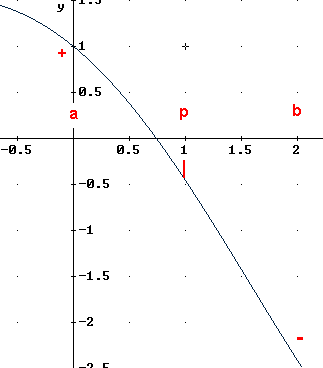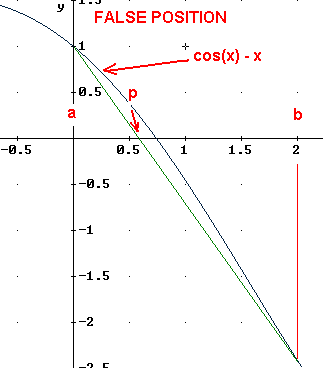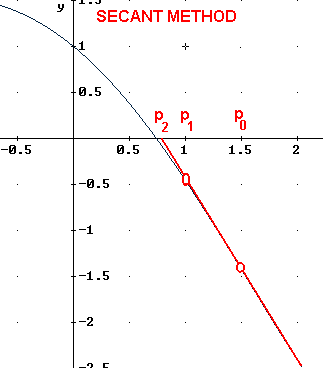Help with solving for
the
Root of an Equation
Prof. Richard B. Goldstein
| (x2 + 2y - 1)5/3 |
is
Math.pow((x*x+2*y-1),5/3) |
 |
is
Math.sqrt(Math.sin(x)/(Math.pow(2,x)+3*Math.log(x))) |
| BISECTION
METHOD |
|
| The root
is found by starting with an interval [a, b] that brackets the root.
The midpoint, p, is then tested to see if f(p) is of the same sign
as f(a) or f(b). Either a or b is then replaced and the interval is
bisected - split in half. |
 |
| FALSE
POSITION METHOD |
|
| The root
is found by starting with an interval [a, b] that brackets the root.
The secant connecting (a,f(a)) and (b,f(b) is found and its x-axis
intercept, p, is then tested to see if f(p) is of the same sign as
f(a) or f(b). Either a or b is then replaced and the interval is
then shrunk. |
 |
| SECANT
METHOD |
|
| Two
initial estimates p0 and p1 of the root are
given. The points on the curve are then connected by a secant. The
x-axis intercept is called p2. Next, p1 and p2
are used to produce p3. This method converges more
rapidly then the ones above - in fact, it is almost as fast as the
Newton-Raphson method but requires fewer function evaluations. There
are problems if the first two points are not well chosen. The first
two methods are more robust - that is, if [a, b] brackets a single
root, then they will always be located by the above two methods for
a continuous function. |
 |
Return to 1 Variable
Root




